Index


Review: Fusion of power, performance, and affordability
EVGA turned up in style for today’s launch of Nvidia’s Geforce GTX 660 Ti as the company is launching its GTX 660 Ti Superclocked (SC) 2GB card. As the name suggests, the Superclocked comes with a factory overclock from standard 915MHz to 980MHz. The overclock is quite high, especially considering that the GTX 660 Ti Superclocked’s Boost clock stands at 1059MHz.
EVGA’s Superclocked resembles Nvidia’s reference design. Most of the partners opted for dual fan coolers, hoping that it will separate them from the pack and attract buyers. EVGA ended up using single fan cooler that looks much like the reference version. However, the cooler is very good at what it does and the GTX 660 Ti SC is almost inaudible, even under heavy load.
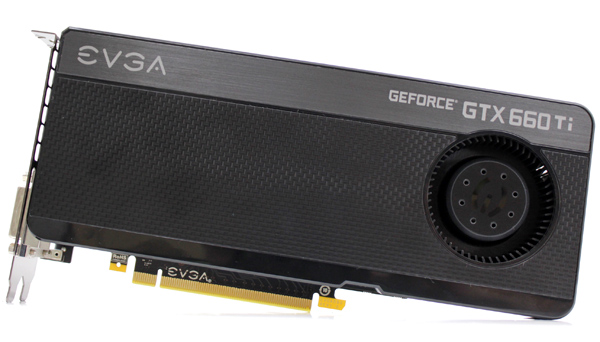
EVGA left the memory at reference 1502MHz (6008MHz effectively). You may recall that the memory on GTX 680/670 cards is clocked the same. By now we can say with certainty that overclocking the memory would’ve brought performance improvements, but it appears as if EVGA stuck to some Nvidia guidelines on overclocking with reference cooling.

Although the GTX 660 Ti and GTX 670 run at same clocks and have the same number of CUDA cores (1334), cutting ROPs from 32 to 24 and the memory interface from 256-bit to 192-bit came at an expense. This is the reason why a reference clocked GTX 660 Ti cannot catch up with the GTX 670. However, overclocked cards such as EVGA’s Superclocked usually come as an answer to those “prayers”. If the GTX 660 Ti Superclocked 2GB provides the kind of overclocking we’ve come to expect from the GTX 670, we’ve no doubt it will match its performance without trouble. Note that the GTX 660 Ti Superclocked goes for €273 + VAT.
The box looks nice and is tough enough to shield the card. Inside the cardboard box is plastic packaging, rather than more paper and cardboard, which we noticed with some earlier cards by EVGA. The small SC logo means the card is Superclocked edition. There are no other details that refer to the Superclocked card, rather general stuff related to the GTX 660 Ti. The box doesn’t say that users will get a gift game in Borderlands 2. We found out that the voucher for the game wasn’t included in the packages for the press but does come with Superclocked cards. We must say that gift games are something we’ve missed dearly, both with AMD and Nvidia, so we definitely welcome this move.
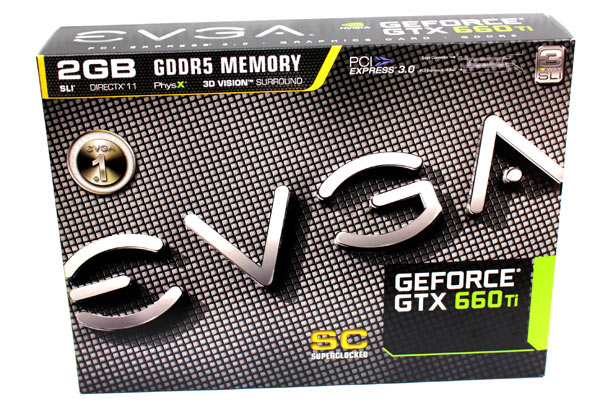
EVGA GTX 660 Ti Superclocked’s packaging is more or less standard. In the box you’ll find:
User Guide
Quick Installation Guide
Driver DVD
A small note about PCIE 3 compatibility
A new sticker set (Enthusiast Built)
EVGA Full Size Poster
EVGA Case Badge
DVI to VGA Dongle
2x Molex to 6-pin Power Adapter
Borderlands 2 gaming code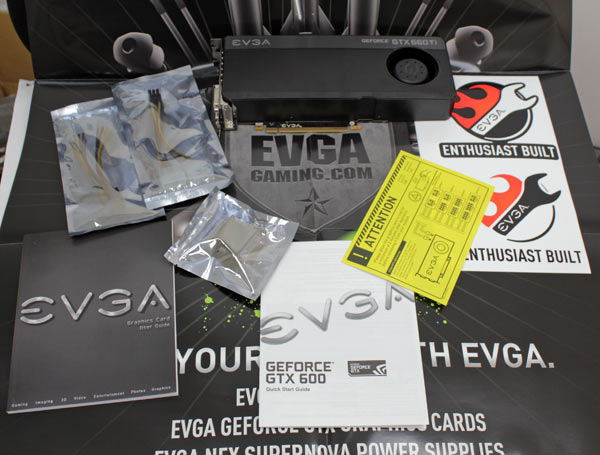
EVGA GTX 660 Ti Superclocked (SC) graphics card has dual slot air cooling that is very similar to Nvidia’s reference design. The Base clock on the Superclocked card is higher than reference, i.e. up from 915MHz to 980MHz. Still, this didn’t prove too troublesome for the cooler which ran quiet even under load.

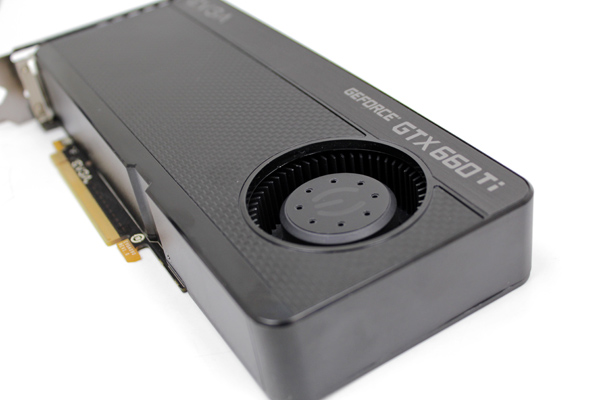
Although the GTX 670 is 24.3cm long, the PCB is only 17.3cm, which is clear once you look at the card from the back.
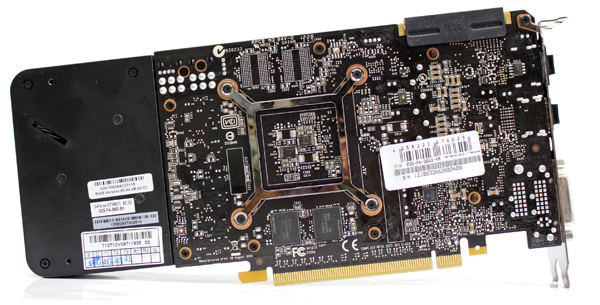
Nvidia moved the power circuitry from its usual spot at the end of the card towards the I/O panel. This left empty space at the end of the PCB, so the company simply cut it off and saved on materials.
GTX 660 Ti SC 2GB is powered via two 6-pin power connectors, just like the reference GTX 660 Ti or GTX 670 card. The reference GTX 660 Ti’s TDP is at 150W.
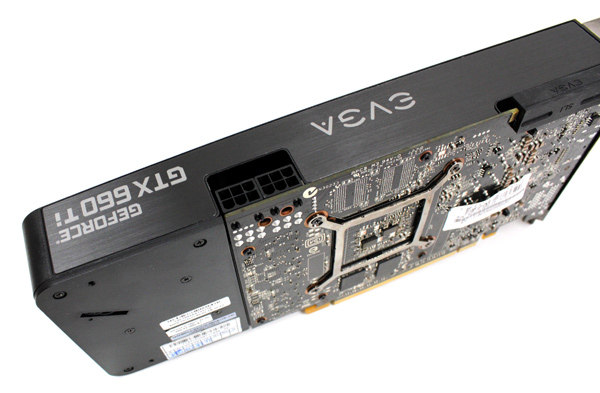
The blower style fan stands on the plastic bracket that’s mounted on the PCB.
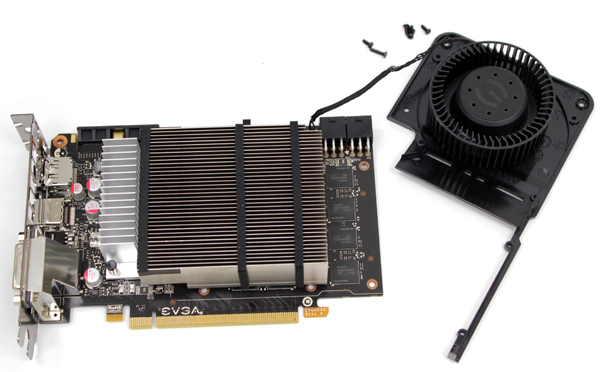
The heatsink is made of one piece of aluminum. Since there are no heatpipes, the copper base was made pretty wide in order to boost dissipation.
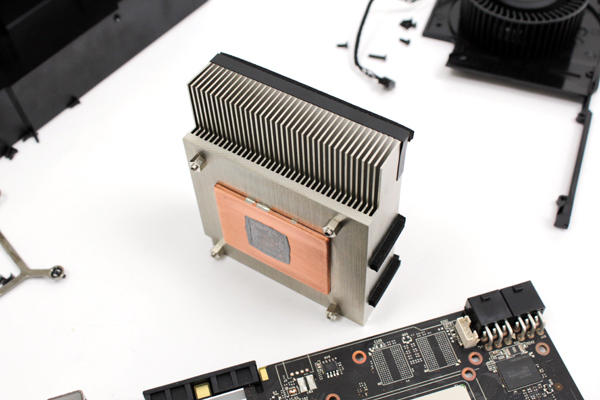
EVGA’s GTX 660 TI SC packs a total of 2GB of GDDR5, in eight memory modules. Two of the modules are placed on the back.
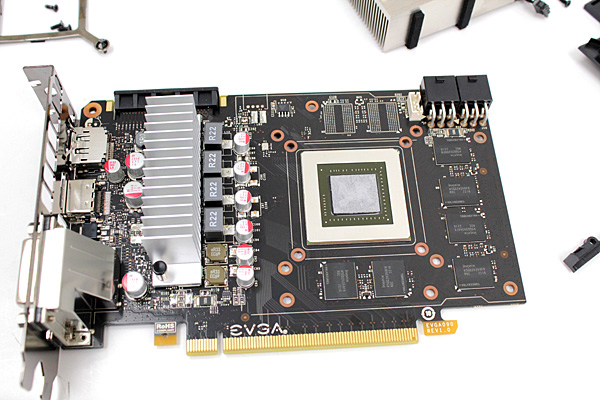
You should know that EVGA plans for a version of the GTX 660 Ti with 3GB of memory in a few weeks time.
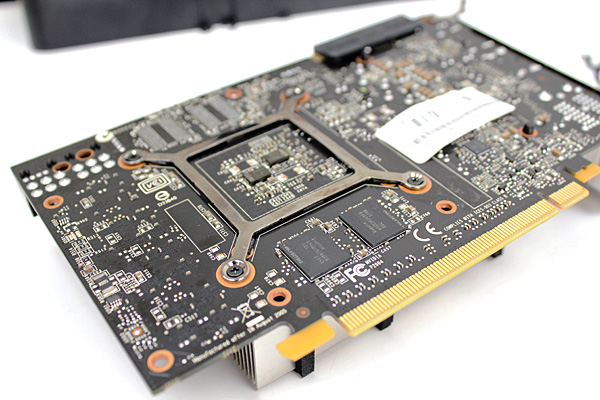
The memory chips in question come from Hynix (model No: H5GQ2H24AFR-R0C). They’re specified to run at 1500MHz (6000MHz GDDR5 effectively).
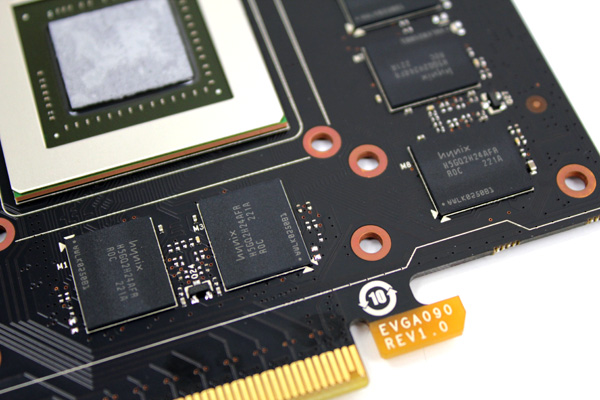
Video outs include two dual-link DVIs (only one is VGA capable) and standard HDMI and DisplayPort connectors. Note that all four outs can be used simultaneously.
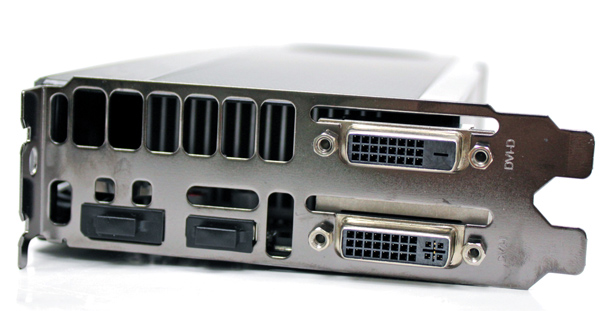
The GTX 670 comes with two SLI connectors usually found only on Nvidia’s high end cards. This means that users can daisy chain more cards in a Quad GTX 660 Ti system. We're actualy not sure whether Quad SLI is possible, since Nvidia officially supports only 3-way SLI, however, we're talking about driver restrictions, so anything is possible. If you remember the 301.42 driver adds Quad SLI support for GTX 670.
Motherboard: EVGA X79 FTW
CPU: Sandy Bridge-E Core i7 3820 (3.6GHz)
CPU Cooler: Thermalright HR-02 (Thermalright-Europa Distri www.PC-Cooling.de).
Memory: 8GB ADATA DDR3 1600 XPG Gaming series
Harddisk: OCZ Vertex 2 100 GB
Power Supply: CoolerMaster Silent Pro 1000W
Case: CoolerMaster Cosmos II Ultra Tower
Operating System: Win7 64-bit
Nvidia 305.37-desktop-win7-winvista-64bit-english
AMD 12-8_vista_win7_64_dd_ccc.exe_whql
3D Mark11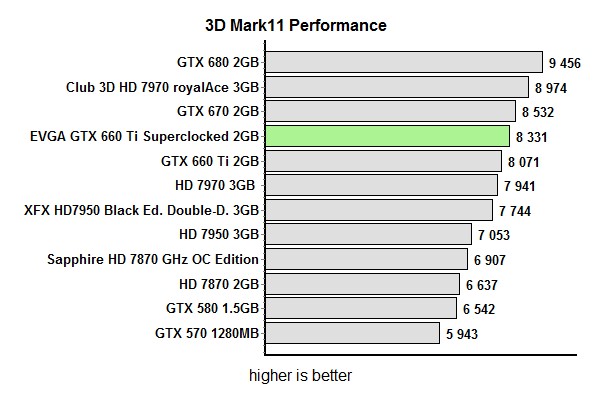
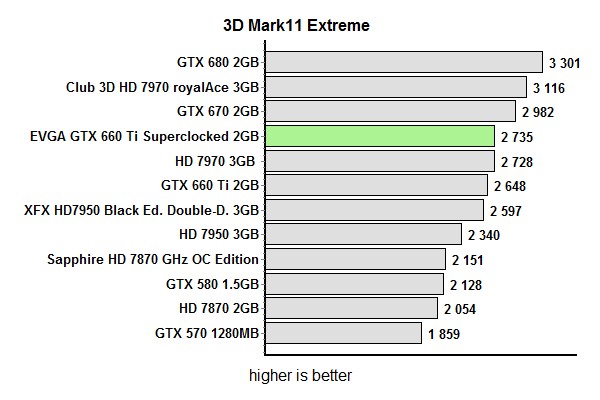
Aliens vs Predator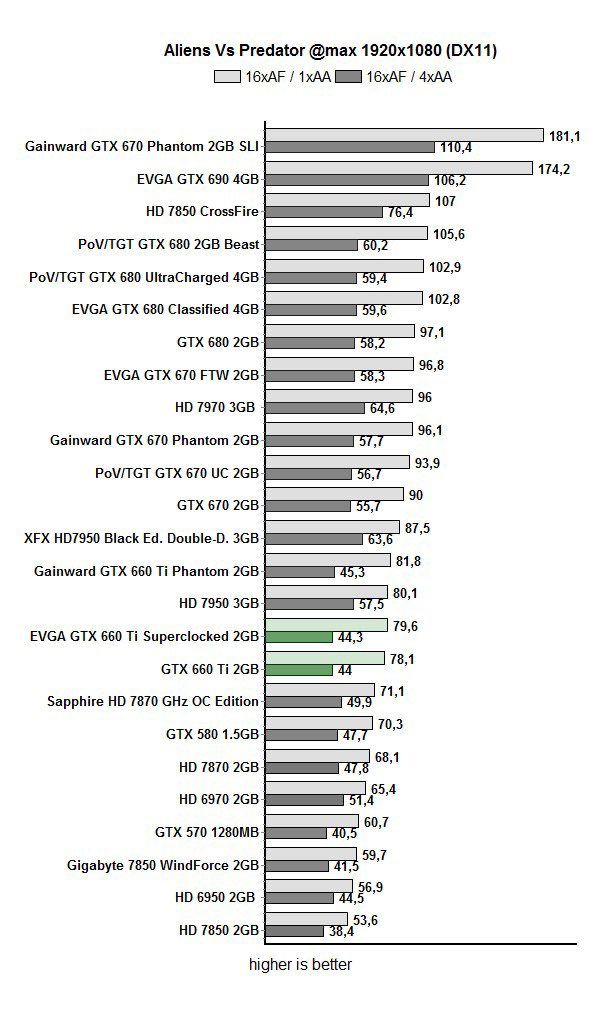
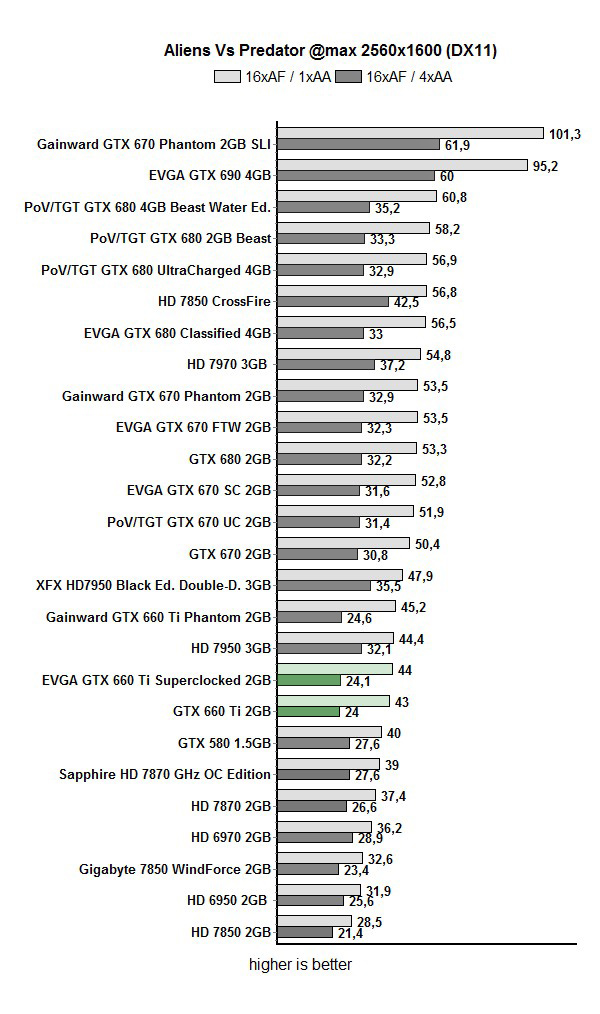
Crysis 2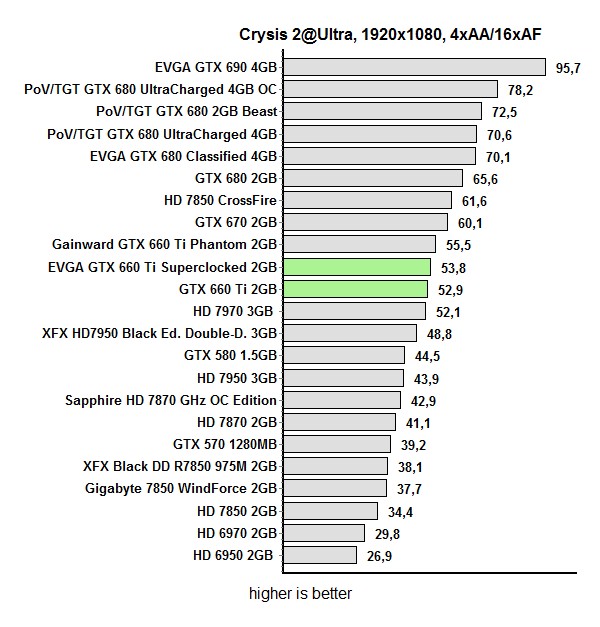
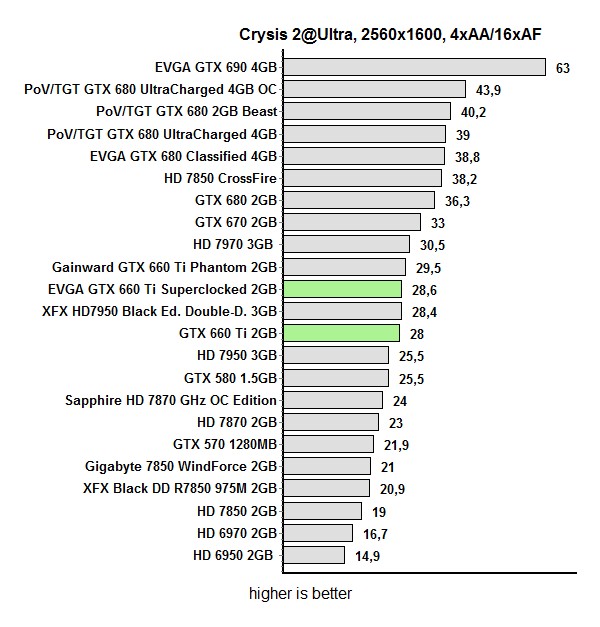
Metro 2033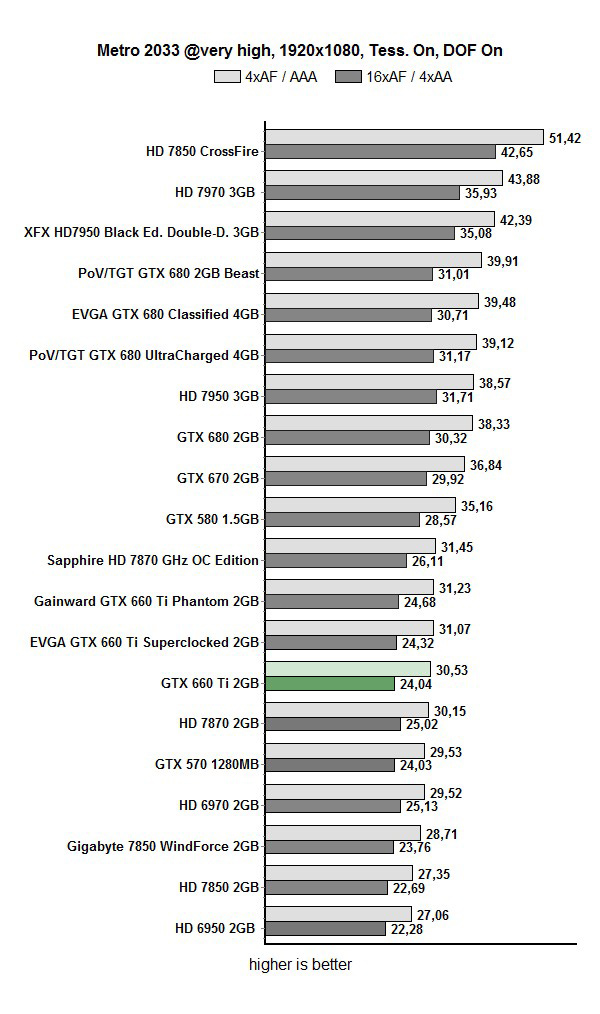
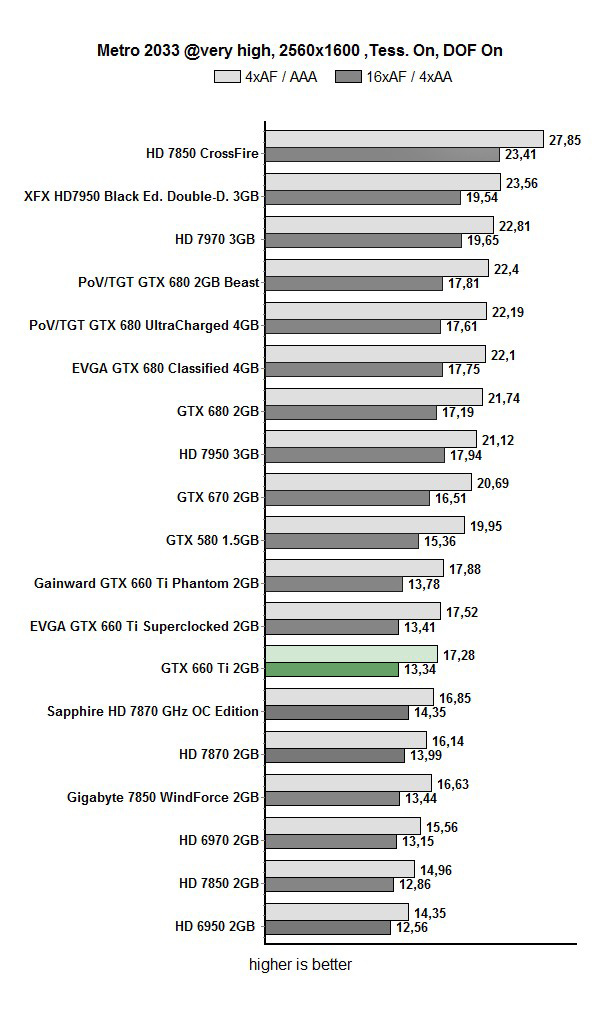
The fan is not very loud and working next to a GTX 660 Ti superclocked 2GB is quite comfortable, even when the card is under full load. For our overclocking, we sped up the fan to 80%. We used PrecisionX tool, which of course supports the GTX 660 Ti. To mark the launch, EVGA even made the new skin, picture below. 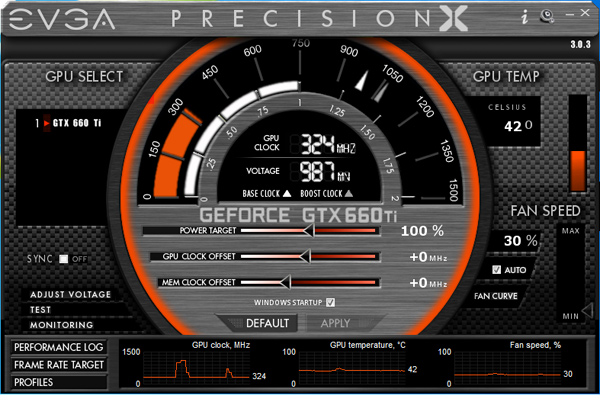
We managed to get GPU clocks similar to those on GTX 670 cards. The GPU ran stable at Base clock of 1050MHz (Boost clock). The memory handled GPU overclockingn well. We overclocked the memory by 200MHz (effectively 800MHz). It appears as if the memory could take more, but we didn’t have more time for overclocking. 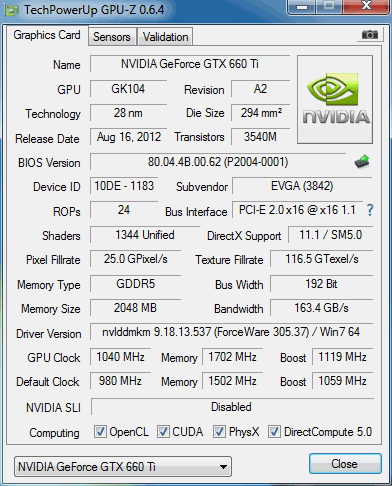
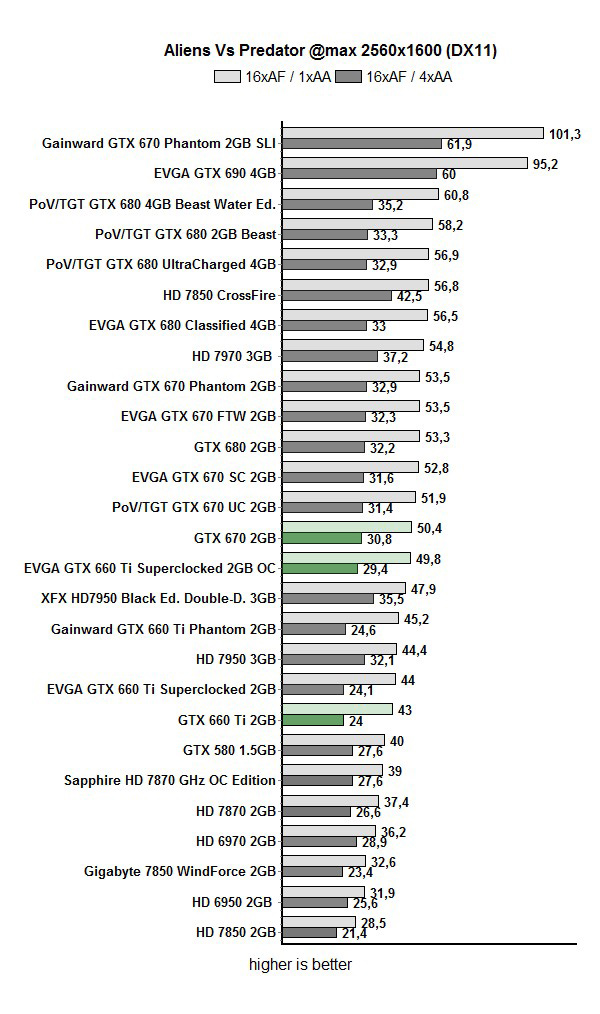
It’s important to note that we could’ve scored the same results with AUTO fan mode, but the fan wouldn’t go much higher, which would result in lower Boost clocks. In order to squeeze out more performance, we sped up the fans manually.
The cooler was never loud while in AUTO mode and never exceeded 61 percent. Once the fan is sped up to 80 percent, you’ll definitely hear it, but it still won’t be too loud.
The following two GPUz shots show temperatures when the fan is in AUTO mode and when maxed out. 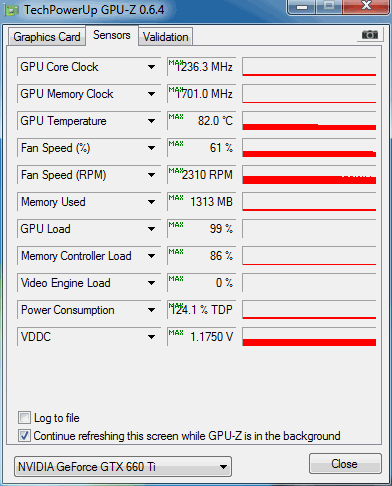
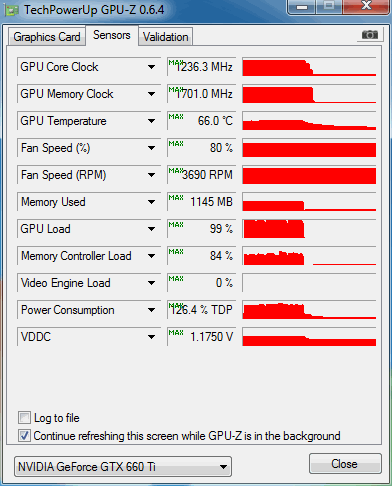
Thermals at default clock: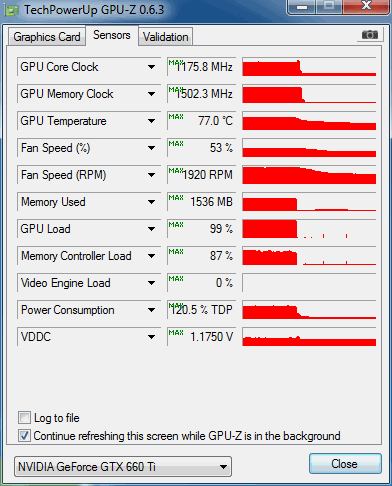
Power Consumption
Consumption is good and our overclock cost only about 10W.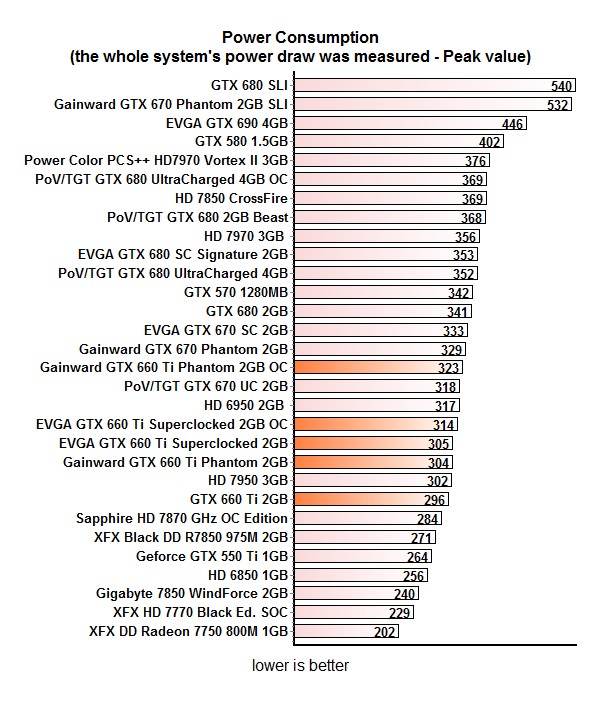
The Geforce GTX 660 Ti is Nvidia’s new graphics card that aims to cater to wider masses of gamers. The GTX 660 Ti Superclocked 2GB launched at €273 + VAT, while the reference card launched at €259. The price difference isn’t that significant, especially if you like EVGA’s gear. Note that not only does the card come with a factory overclock, EVGA also ships a free game, i.e. a voucher for Borderlands 2.
We’ve seen that the GTX 660 Ti SC offers quality performance at 1920x1080. At this resolution, it’s even capable of beating the HD 7950.
EVGA uses cooling similar to the reference solution, meaning blower style cooling. This should not concern you unless you’re planning on more serious overclocking. Luckily, the cooler is almost inaudible, even when the card is under load.
Those who want more straight out of the box should perhaps wait for the FTW version. EVGA has also announced a GTX 660 Ti with 3GB of memory, which is yet another alternative if you don’t want to jump the gun. However, choosing the GTX 660 Ti Superclocked is definitely not a wrong choice either and the card will reward you with a nice fusion of power, performance and affordability.




